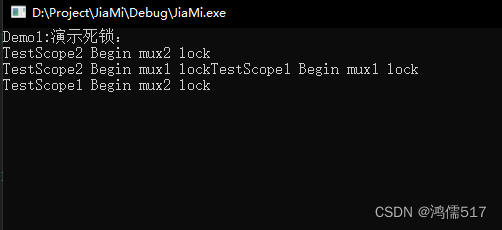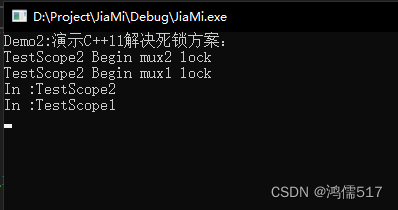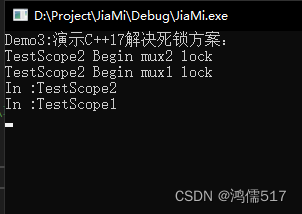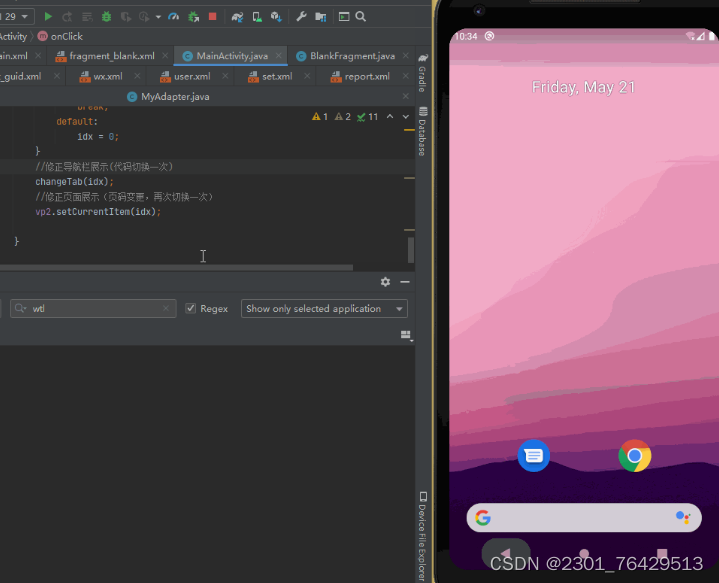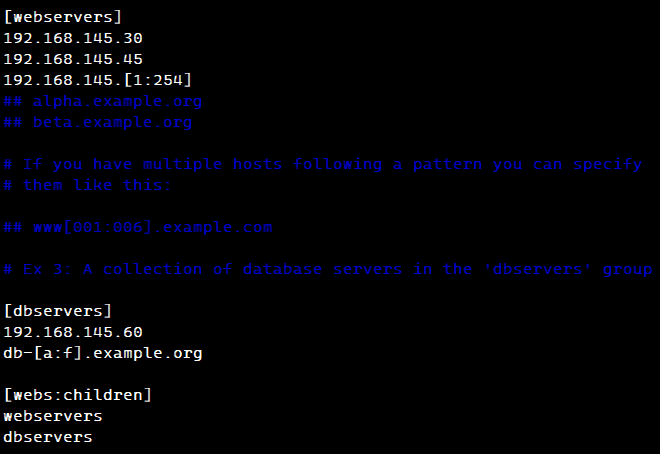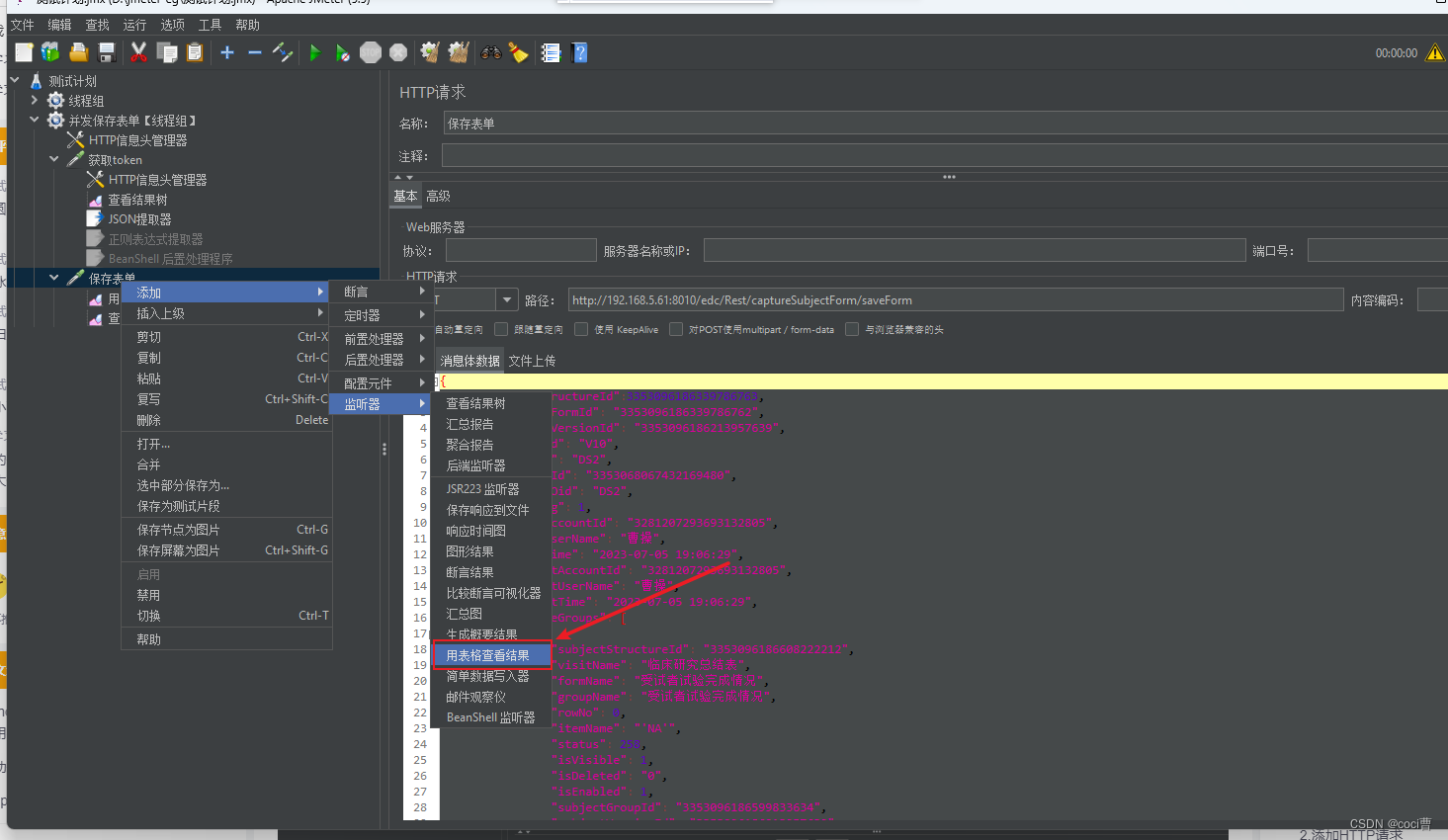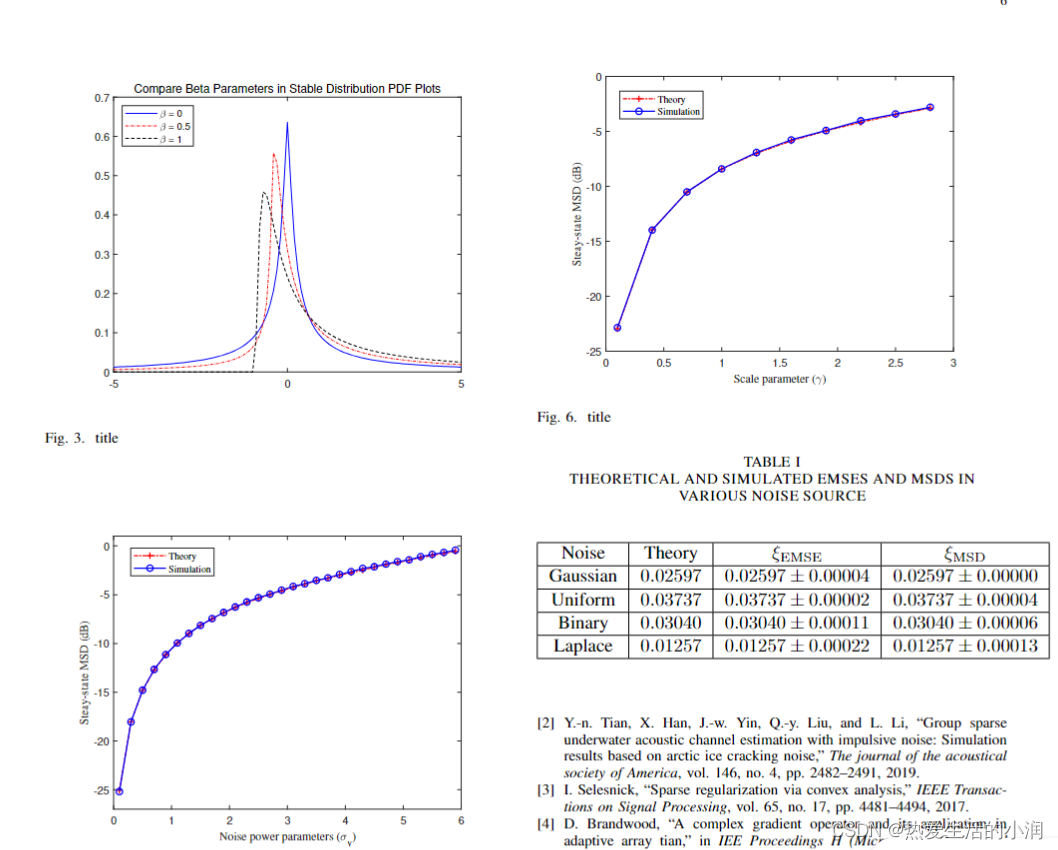1、什么是RALL,手动代码实现
RALL(resource Acquisition Is Initialization )C++ 之父Bjarne Stroustrup 提出;
使用局部对象来管理资源的技术称为资源获取即初始化;它的生命周期是由操作系统来管理的,无需人工介入;资源的销毁容易忘记,造成死锁或者内存泄漏。
1.1、手动实现RALL管理mutex资源
RALL 编写代码方式,代码更简介,而且不会遗漏解锁
#include <thread>
#include <iostream>
#include <string>
#include <mutex>
#include <shared_mutex>
using namespace std;
//RALL
class XMutex
{
public:
XMutex(mutex & mux):mux_(mux)//引用的时候赋值,在初始化的时候就记到成员变量中
{//构造函数中加锁
cout << "Lock" << endl;
mux.lock();
}
~XMutex()
{
cout << "UnLock" << endl;
mux_.unlock();
}
private:
mutex& mux_;//把初始化的锁存下来,引用
};
static mutex mux;
void TestMutex(int status )
{//业务逻辑
XMutex lock(mux);
if (status == 1)
{
cout << "=1" << endl;
return;
}
else
{
cout << "!= 1" << endl;
return;
}
return;
}
int main()
{
TestMutex(1);
TestMutex(2);
return 0;
}

1.2、C++ 11 支持的RALL管理互斥资源lock_guard
C++ 11 实现严格基于作用域的互斥体所有权包装器;
adopt_lock C++11 类型为adopt_lock_t ,假设调用方已拥有互斥的所有权;
通过{}控制锁的临界区

举例了三种情形
#include <thread>
#include <iostream>
#include <string>
#include <mutex>
#include <shared_mutex>
using namespace std;
static mutex gmutex;
void TestLockGuard(int i)
{//错误用法示例:这样写会被第一个线程占用,不能出来
lock_guard<mutex> lock(gmutex);
for (;;)
{
cout << "In " << i << endl;
this_thread::sleep_for(500ms);
}
}
void TestLockGuard_Demo2(int i)
{//正确用法,用大括号来释放锁
{
lock_guard<mutex> lock(gmutex);
cout << "Begin thread " << i << endl;
}
for (;;)
{
{
lock_guard<mutex> lock(gmutex);
cout << "In " << i << endl;
this_thread::sleep_for(200ms);
}
this_thread::sleep_for(1ms);
}
}
void TestLockGuard_Demo3(int i)
{//举例开头拥有锁的初始化情况
gmutex.lock();
{
//开头已经用有锁
//lock_guard<mutex>lock(gmutex);//这样写会报错,因为这个锁在外部已经锁住了,通过捕获异常可以进行分析;
lock_guard<mutex>lock(gmutex,adopt_lock);//如果外部锁住了,这样写可以避免(调用了重载特性),程序可以正常运行
//解锁
}
{
lock_guard<mutex> lock(gmutex);
cout << "Begin thread " << i << endl;
}
for (;;)
{
{
lock_guard<mutex> lock(gmutex);
cout << "In " << i << endl;
this_thread::sleep_for(200ms);
}
this_thread::sleep_for(1ms);
}
}
int main()
{
//printf("Demo1:\n");
//for (int i = 0; i < 3; i++)
//{
// thread th(TestLockGuard,i+1);
// th.detach();
//}
//getchar();
//printf("Demo2:\n");
//for (int i = 0; i < 3; i++)
//{
// thread th(TestLockGuard_Demo2, i + 1);
// th.detach();
//}
//getchar();
printf("Demo3:\n");
for (int i = 0; i < 3; i++)
{
thread th(TestLockGuard_Demo3, i + 1);
th.detach();
}
getchar();
return 0;
}

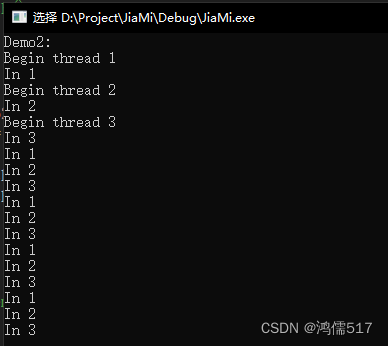
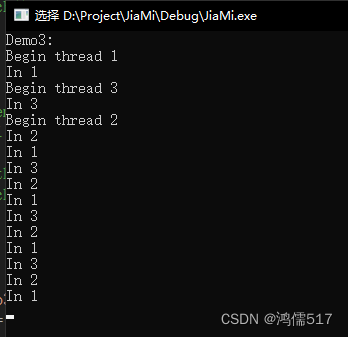
1.3、unique_lock C++ 11
unique_lock C++ 11实现可移动的互斥体所有权包装器
支持临时释放锁unlock
支持adopt_lock(已经用有锁,不加锁,出栈区会释放)
支持defer_lock(延后拥有,不加锁,出栈区不释放)
支持try_to_lock尝试获得互斥的所有权而不阻塞,获取失败退出栈区不会释放,通过owns_lock函数判断
#include <thread>
#include <iostream>
#include <string>
#include <mutex>
#include <shared_mutex>
using namespace std;
int main()
{
{
static mutex mux;
{
//第一种常规特性,与lock_guard使用方法一样,但是不一样的是,执行过程中可以临时释放锁,再加锁
unique_lock<mutex>lock(mux);//
lock.unlock();//但是unique_lock支持中间临时释放锁
lock.lock();//加锁
}//出栈释放锁
{
//第二个特性:已经用有锁,不锁定,退出解锁
mux.lock();
unique_lock<mutex>lock(mux,adopt_lock);//针对已经用有锁
}
{
//第三个特性,延后加锁,不拥有,退出不解锁
unique_lock<mutex>lock(mux,defer_lock);//延时锁,在后面再进行上锁
lock.lock();//主动上锁,退出栈区解锁
}
{
//mux.lock();//如果被锁定,后面也不会阻塞,不用有所
//第四种特性,尝试加锁,不阻塞,失败不拥有锁
unique_lock<mutex> lock(mux, try_to_lock);
if (lock.owns_lock())
{
cout << "owns_lock" << endl;
}
else
{
cout << "not owns_lock" << endl;
}
}
}
getchar();
return 0;
}
1.4、shared_lock C++ 14
C++14才有的特性
实现可移动的共享互斥体所有权封装器
使用方法:
#include <thread>
#include <iostream>
#include <string>
#include <mutex>
#include <shared_mutex>
using namespace std;
int main()
{
{
//共享锁
static shared_timed_mutex tmux;
//读取锁,共享锁
{
//调用共享锁
shared_lock<shared_timed_mutex>lock(tmux);
cout << "Read data" << endl;
}//退出栈区释放构造,释放共享锁
{
//写入锁,互斥锁
unique_lock<shared_timed_mutex>lock(tmux);
cout << "write data" << endl;
}
}
getchar();
return 0;
}
1.5、scoped_lock C++17
scoped_lock C++17 用于多个互斥体的免死锁RAII封装器,类似lock
设置方法:
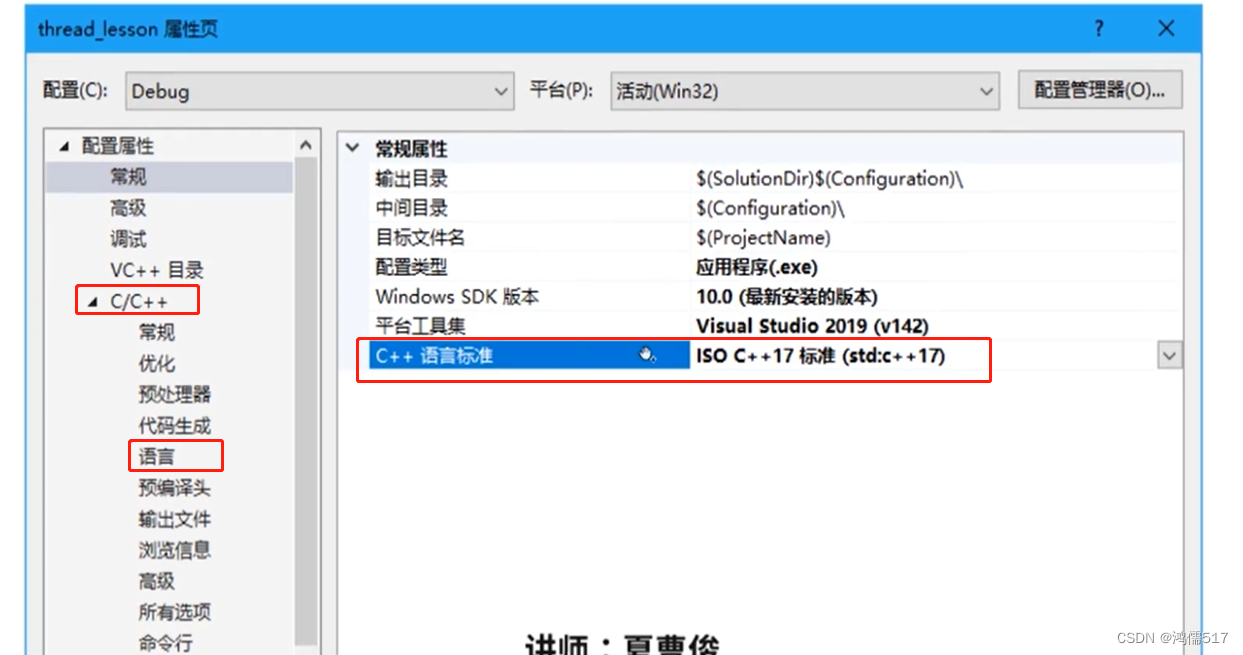
//要用到C++17,需要在属性->C++ ->语言 ->C++语言标注-> C++17
#include <thread>
#include <iostream>
#include <string>
#include <mutex>
#include <shared_mutex>
using namespace std;
static mutex mux1;
static mutex mux2;
void TestScope1()
{//死锁的测试代码
this_thread::sleep_for(100ms);//模拟死锁,停100ms
cout << "TestScope1 Begin mux1 lock" << endl;
mux1.lock();
cout << "TestScope1 Begin mux2 lock" << endl;
mux2.lock();//死锁
cout <<"In :TestScope1" << endl;
this_thread::sleep_for(1000ms);
mux1.unlock();
mux2.unlock();
}
void TestScope2()
{//这个代码不变
cout << "TestScope2 Begin mux2 lock" << endl;
mux2.lock();
this_thread::sleep_for(100ms);//模拟死锁,停100ms
cout << "TestScope2 Begin mux1 lock" << endl;
mux1.lock();//死锁
cout << "In :TestScope2" << endl;
this_thread::sleep_for(1500ms);
mux2.unlock();
mux1.unlock();
}
void TestScope1_C11()//C++11的解决方案
{
this_thread::sleep_for(100ms);//模拟死锁,停100ms
//cout << "TestScope1 Begin mux1 lock" << endl;
//mux1.lock();
//cout << "TestScope1 Begin mux2 lock" << endl;
//mux2.lock();//死锁
lock(mux1,mux2);//C++11的解决方案,两个同时锁住才能进行下一步操作,有一个没有锁住,则不进行下一步操作
cout << "In :TestScope1" << endl;
this_thread::sleep_for(1000ms);
mux1.unlock();
mux2.unlock();
}
void TestScope1_C17()//C++17的解决方案
{
this_thread::sleep_for(100ms);//模拟死锁,停100ms
//cout << "TestScope1 Begin mux1 lock" << endl;
//mux1.lock();
//cout << "TestScope1 Begin mux2 lock" << endl;
//mux2.lock();//死锁
//lock(mux1, mux2);//C++11的解决方案,两个同时锁住才能进行下一步操作,有一个没有锁住,则不进行下一步操作
scoped_lock lock(mux1,mux2);//C++17的解决方案,必须要把属性设置为C++17才行
cout << "In :TestScope1" << endl;
this_thread::sleep_for(1000ms);
//mux1.unlock();//C++17这种方法改后,这里不需要手动释放,否则会报错
//mux2.unlock();
}
int main()
{
{
//printf("Demo1:演示死锁:\n");
演示死锁
//{
// thread th(TestScope1);
// th.detach();
//}
//printf("Demo2:演示C++11解决死锁方案:\n");
//{//C++ 11的解决方案
// thread th(TestScope1_C11);
// th.detach();
//}
printf("Demo3:演示C++17解决死锁方案:\n");
{//C++ 17的解决方案
thread th(TestScope1_C17);
th.detach();
}
{//下面代码不注释,不动
thread th(TestScope2);
th.detach();
}
}
getchar();
return 0;
}
